Oldest Indo-European Calendar Based On The Orion Constellation Is Engraved On A Vucedol Vessel
Jan Bartek - AncientPages.com - The beauty of stargazing is that so many celestial objects are visible to the naked eye. Ancient people who did not have access to modern, sophisticated telescopes could study stars, planets, the Sun, the Moon, and comets. This allowed ancient civilizations to produce startling accurate calendars and astronomically align temples and pyramids.
Almost 5,000 years ago, the Vucedol culture that lived on the banks of the Danube River watched the night skies and made the oldest Indo-European calendar based on the cycles of Orion.
The Orion constellation is visible to the naked eye, but if you use binoculars you see the stars much better of course. Credit: Adobe Stock - vchalup
The brightest star in the Orion constellation is Rigel, located about 863 light-years away. The blue supergiant, clearly visible in the Northern and Southern hemispheres, is about 47,000 times as luminous as our Sun.
In 1978, archaeologists excavated at a site where the present-day Hotel Slavonija is located in the eastern town of Vinkovci in Croatia. In ancient times, the area was occupied by the Vucedol culture that flourished between 3000 and 2200 B.C
Compared to many other ancient civilizations, the Vucedol culture is not particularly famous, but one should remember that the history of Vucedol culture goes far back in time. The Vucedol culture thrived contemporary with the Sumerian period in Mesopotamia, the Old Kingdom of Egypt, and the early Troyans. The Vucedol culture did not build magnificent pyramids or ziggurats, but their unique ceramics have attracted interest worldwide.
When archaeologists examined the site, they discovered a stunning ancient vessel engraved with beautiful ornaments with deep symbolic meaning. At first glance, the artifact appeared to be a beautiful object that skilled ancient Balkan craftsmen created. Still, later studies revealed the vessel had not been produced to express artistic skills.
The ornaments on the Vucedol vessel represent the oldest Indo-European calendar based on the Orion cycles. Credit: Emilia Pasztor, Türr István Museum
Aleksandar Durman from Zagreb's Faculty of Humanities and Social Sciences, who led the archaeological team, examined the engraved ornaments on the Vucedol vessel and discovered this was no ordinary household object.
The creators of the Vucedol vessel expressed sophisticated astronomical knowledge through art.
Produced around 2,600 B.C., or possibly even earlier, the Vucedol vessel "represents the most complete Indo-European calendar, which is based on the astral symbolism with pertinent constellations to all four seasons.
Although it was created in the same time period as the Sumerian and Egyptian calendars, it does not represent their replica, since it is based on the 45th parallel.
The climate conditions which correspond to that latitude have four seasons as a consequence. The constellations which represent specific seasons are marked as during the time of twilight as the first features on the evening sky (Orion, the Pleiades, Gemini, Pisces, Cassiopeia, Cygnus).
The usual imagery of the Sun, without any imagery of the Moon, confirms the complete absence of the lunar symbolism which is in fact the Indo-European characteristic. In the Vučedol culture, the year used to begin with the spring equinox, when the Sun symbolically used to step in the place of the most important winter constellation - Orion.
That is to say, during that night, the Orion belt (three stars) would become visible for a short time for the last time in the winter sky, then disappearing for several months. That congruity, the disappearance of Orion at spring equinox, was first recorded by the inhabitants of the Vučedol culture. It helped them determine the first day in their year with the actual number of days of the yearly revolution of Earth around the Sun." 1
After many years of study, scientists could determine the "engraved ornaments represent the constellations which dominate the night sky above Vinkovci, and specifically:
- Spring: Orion and Sun
- Summer: the Pleiades, Cassiopeia and Cygnus
- Autumn: the Pleiades, Gemini and Pisces/Pegasus
- Winter: the Pleiades, Gemini, Pisces/Pegasus, Cassiopeia and the dominant winter constellation Orion" 1
Based on the results of these long studies, Professor Durman concluded that the Vucedol vessel had been manufactured to govern the seasonal life of people in this region. This means the Vucedol vessel is one of the oldest European calendars ever discovered. It is undoubtedly the oldest calendar based on the Orion cycles ever unearthed in Europe.
Archaeological discoveries show the Vucedol people built their settlements on "naturally elevated prominent positions, located in the vicinity of rivers or smaller streams. Such positions represent a very logical choice, important from the strategic point of view.
Fortification of established settlements depended primarily on the natural configuration of the soil and on landscape features. The large number of fortified settlements suggests that the Vučedol population yearned for a more peaceful and continuous life in one place, as well as the tendency to settle at previously inhabited and deserted positions which could easily be fortified." 2
This means the Vucedol calendar was not only crucial from an agricultural point of view. It also helped the Vucedol culture to determine which areas had suitable ground to construct settlements people could occupy for a long time.
One of the most famous pieces of Vučedol is the ritual vessel made between 2800 and 2500 B.C. Credit: Public Domain
It is also interesting to see "some of the geometric designs on the Vucedol calendar pot panels show striking similarity with motifs of the squares of the game boards found in funerary context of the Royal Cemetery of Ur dated from the mid-third millennium BC. This TwentySquares Game was played all across the ancient Near East. They attest to the cultural contacts across the vast region that stretches between the Euphrates and Indus rivers." 3
Updated on October 8, 2022
Written by Jan Bartek - AncientPages.com Staff Writer
Copyright © AncientPages.com All rights reserved. This material may not be published, broadcast, rewritten or redistributed in whole or part without the express written permission of AncientPages.com
Expand for references- Dr. Aleksandar Durman - Orion - The Oldest Indo-European Calendar, Vinkovci Tourist Board
- Miloglav, Ina. " A Model Of Ceramic Production, Specializing And Standardization Of Ceramic Assemlages On The Basis Of Two Sites Of The Vucedol Culture In Eastern Croatia." Anthropologie (1962-) 51, no. 2 (2013): 195-212.
- Pasztor, Emilia. (2015). Celestial Symbolism of the Vučedol Culture. 10.1007/978-1-4614-6141-8_134.
More From Ancient Pages
-
 7,000-Year-Old Native American Underwater Burial Site Discovered Off The Coast Of Florida
Archaeology | Mar 3, 2018
7,000-Year-Old Native American Underwater Burial Site Discovered Off The Coast Of Florida
Archaeology | Mar 3, 2018 -
 On This Day In History: John Dee, English Mathematician, Occultist, Astrologer, Astronomer Was Born – On July 13, 1527
News | Jul 13, 2016
On This Day In History: John Dee, English Mathematician, Occultist, Astrologer, Astronomer Was Born – On July 13, 1527
News | Jul 13, 2016 -
 Gruesome Discovery Of Headless Bodies In Vráble, Slovakia – Remains Of Stone Age Cult Victims Unearthed
Archaeology | Sep 24, 2022
Gruesome Discovery Of Headless Bodies In Vráble, Slovakia – Remains Of Stone Age Cult Victims Unearthed
Archaeology | Sep 24, 2022 -
 11 Reconstructions Of Ancient Cities, Monuments And Sacred Sites
Civilizations | Jun 25, 2024
11 Reconstructions Of Ancient Cities, Monuments And Sacred Sites
Civilizations | Jun 25, 2024 -
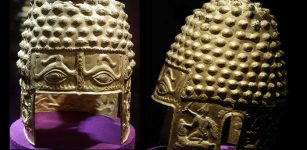 Ancient Dacian Gold Helmet With Piercing Evil Eyes
Artifacts | Jan 4, 2019
Ancient Dacian Gold Helmet With Piercing Evil Eyes
Artifacts | Jan 4, 2019 -
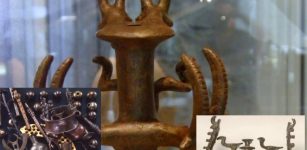 Nahal Mishmar Secrets: Priceless Artifacts In Cliff Cave Overlooking The Dead Sea
Artifacts | May 20, 2014
Nahal Mishmar Secrets: Priceless Artifacts In Cliff Cave Overlooking The Dead Sea
Artifacts | May 20, 2014 -
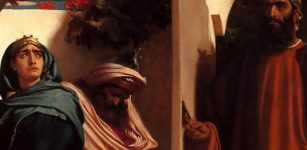 Jezebel Of Sidon – Wicked Wife Of King Ahab And Her Evil Rule
Biblical Mysteries | Aug 7, 2019
Jezebel Of Sidon – Wicked Wife Of King Ahab And Her Evil Rule
Biblical Mysteries | Aug 7, 2019 -
 8,000 Year-Old Human Skeleton Discovered By Cave Divers Near Tulum, Mexico
Archaeology | Sep 15, 2022
8,000 Year-Old Human Skeleton Discovered By Cave Divers Near Tulum, Mexico
Archaeology | Sep 15, 2022 -
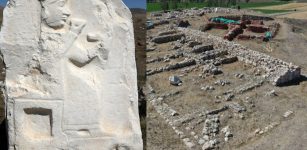 Ancient Hittite Temple Dedicated To The Goddess Of Night To Be Unearthed
Archaeology | Oct 2, 2021
Ancient Hittite Temple Dedicated To The Goddess Of Night To Be Unearthed
Archaeology | Oct 2, 2021 -
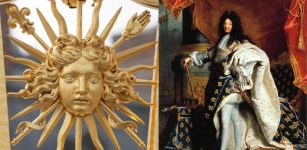 Why Was Louis XIV Called The Sun King?
Ancient History Facts | Jul 11, 2019
Why Was Louis XIV Called The Sun King?
Ancient History Facts | Jul 11, 2019 -
 Colors On These Ancient Pots Hint At The Power Of An Empire
Archaeology | Mar 7, 2023
Colors On These Ancient Pots Hint At The Power Of An Empire
Archaeology | Mar 7, 2023 -
 Unique Ancient Structure With Mysterious V-Shaped Carvings, Wine Press And More Discovered In The City Of David, Jerusalem
Archaeology | Jan 24, 2025
Unique Ancient Structure With Mysterious V-Shaped Carvings, Wine Press And More Discovered In The City Of David, Jerusalem
Archaeology | Jan 24, 2025 -
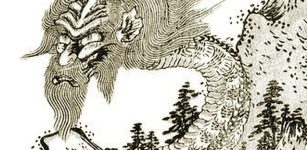 Legend Of The Candle Dragon That Could Lighten The Darkest Gate Of Heaven
Chinese Mythology | Jan 15, 2016
Legend Of The Candle Dragon That Could Lighten The Darkest Gate Of Heaven
Chinese Mythology | Jan 15, 2016 -
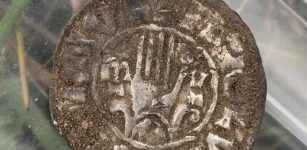 Hoards Of Viking Coins Discovered On The Island Of Saaremaa
Archaeology | Oct 7, 2019
Hoards Of Viking Coins Discovered On The Island Of Saaremaa
Archaeology | Oct 7, 2019 -
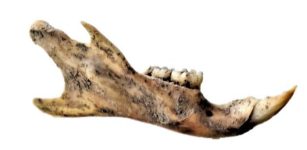 New DNA Study Reveals How The Black Rat Colonized Europe In The Roman And Medieval Periods
Archaeology | May 6, 2022
New DNA Study Reveals How The Black Rat Colonized Europe In The Roman And Medieval Periods
Archaeology | May 6, 2022 -
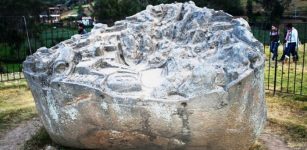 Puzzling Huge Ancient Sayhuite Monolith In Peru Remains An Unsolved Mystery
Civilizations | Jul 23, 2016
Puzzling Huge Ancient Sayhuite Monolith In Peru Remains An Unsolved Mystery
Civilizations | Jul 23, 2016 -
 Puzzling Runic Inscription Dated To 1050-1500 AD Unearthed In Oslo, Norway
Archaeology | Dec 13, 2017
Puzzling Runic Inscription Dated To 1050-1500 AD Unearthed In Oslo, Norway
Archaeology | Dec 13, 2017 -
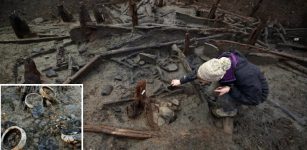 Mystery Of The British Pompeii Deepens – Bronze Age Settlement Destroyed By Dramatic Fire
Archaeology | Jun 23, 2019
Mystery Of The British Pompeii Deepens – Bronze Age Settlement Destroyed By Dramatic Fire
Archaeology | Jun 23, 2019 -
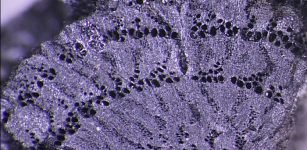 Ancient Tell-Tayinat Inhabitants And Climate Change Resilience – New Study
Archaeology | Oct 30, 2020
Ancient Tell-Tayinat Inhabitants And Climate Change Resilience – New Study
Archaeology | Oct 30, 2020 -
 Aztec Empire: ‘Tlatoani’ – The Ruler With The Ultimate Power In The Land
Ancient History Facts | May 5, 2016
Aztec Empire: ‘Tlatoani’ – The Ruler With The Ultimate Power In The Land
Ancient History Facts | May 5, 2016



